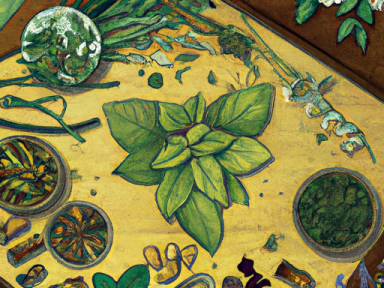
Medicinal Plants: Nature’s Pharmacy
When disaster strikes and medical help is scarce or nonexistent, knowing how to find and utilize medicinal plants can be a lifesaver. Nature provides us with an abundance of healing plants, ready to be foraged and used in times of need. Below are some common medicinal plants that you can find in the wild and how to use them:
1. Echinacea
Echinacea, also known as the purple coneflower, is a powerful immune-booster. Its root, leaves, and flowers can be brewed into a tea, tincture, or made into a salve. Echinacea helps fight off infections, reduces inflammation, and promotes wound healing.
2. St. John’s Wort
St. John’s Wort is a flowering plant with antidepressant and antiviral properties. Its flowers and leaves can be steeped in oil to create a salve for treating burns, wounds, and nerve pain. It can also be brewed into a tea to alleviate mild depression and anxiety.
3. Aloe Vera
Aloe vera is a succulent plant with gel-filled leaves that has been used for centuries to soothe burns, rashes, and other skin irritations. Simply break off a leaf and apply the gel directly to the affected area for instant relief. Aloe vera is also known for its antibacterial properties.
4. Calendula
Calendula, or pot marigold, is a beautiful medicinal plant that is known for its ability to heal wounds and soothe skin irritations. The petals of the plant can be infused in oil to create a salve or added to a bath for a soothing soak. Calendula is also great for digestive health and can be brewed into a tea to ease stomach aches and indigestion.
5. Yarrow
Yarrow is an excellent plant for treating wounds and stopping bleeding. Its leaves can be crushed and applied directly to a wound to aid in clotting and disinfecting. Yarrow can also be brewed into a tea to alleviate fevers, promote digestion, and relieve menstrual cramps.
6. Chamomile
Chamomile is well-known for its calming properties, making it the perfect plant to combat anxiety, insomnia, and indigestion. Its flowers can be steeped into a tea or added to a bath for a relaxing and soothing experience.
Remember, when foraging for medicinal plants, it is essential to correctly identify the plants and ensure they are safe for consumption. Invest time ahead of a crisis to learn about the various medicinal plants in your region and how to use them effectively.
By familiarizing yourself with these common medicinal plants, you will be equipped with the knowledge to take care of yourself and your loved ones when traditional medical options are unavailable. Nature provides us with an incredible pharmacy right at our fingertips—let’s make sure we know how to use it.



GIPHY App Key not set. Please check settings